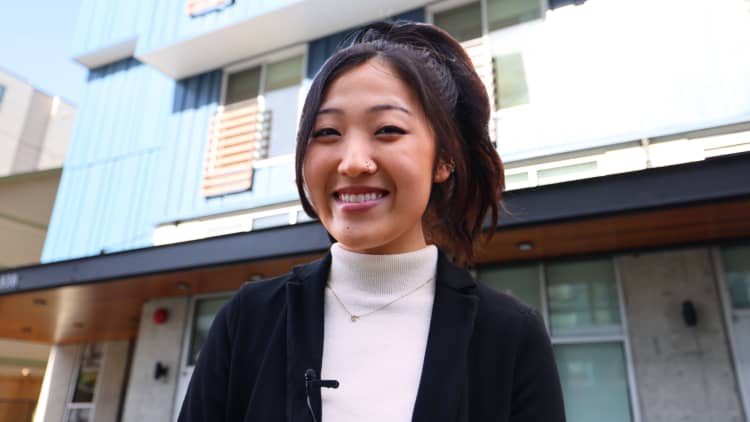Focusing on the task in front of you while staying aware of your longer-term goals is a challenge for just about everyone.
Some companies have cracked the code, says a business strategist.
Sam Sterling, a managing director of strategy at digital communications agency AKQA, spent two and a half years studying 16 high-growth companies, including McDonalds, Starbucks, Lululemon, Columbia Sportswear and Burberry.
She studied data from the first day of trading in 2010 to the first day of trading in 2020, interviewing team members at every level of each company and analyzing their financial and internal data.
The one trait they all had in common, she found: ambidexterity. In business terms, that's "the ability to perform now by making the most of what you already have, whilst simultaneously discovering and developing your next source of growth," Sterling tells CNBC Make It.
A business' metaphorical left hand may be dedicated to "the processes, customers and products that you currently have, the markets that you understand well and focusing on being able to optimize them," Sterling says.
In an ideal situation, the right hand would focus on "what comes next," she says. "What markets don't you understand? What products don't you know? Should you be going after different customers?"
Being able to prioritize the two is "very difficult," Sterling says. Finding that balance separates high-performing businesses from others, she adds.
Here's how some of the companies Sterling tracked do it.
Know when to say 'no' to opportunities
Nobody can say "yes" to every single opportunity they're ever presented. Knowing when it's OK to say "no" is the first step, Sterling says.
That requires building some self-awareness. In the context of business, that means knowing what your company "can and will do, versus what it won't," Sterling says.
Some of her clients struggle with this, she adds.
"It's so easy to get distracted by the big, shiny thing," says Sterling. "You come up with a strategy, but then there's a new opportunity and you drift off course. That's how you often end up in that 'no man's land' where you're not really getting movement on anything, because you're doing all the things at once."
She cites Starbucks as an example. The $123.56 billion company is the largest and most recognizable coffeehouse chain in the world, with a reputation for being people's "third place" to spend time — after home and work.
Some of Starbucks' items are available on-the-go, and it could easily lean further into that, but the company has "resisted the urge" to join "the likes of McDonalds," Sterling says.
That's smart, she adds: When people build habits around spending time in your coffee shops, the last thing you want to do is encourage them to leave more quickly, even if you're theoretically sacrificing potential profit.
Constantly challenge your existing ideas
The second step, Sterling says: Consider a variety of perspectives whenever you make decisions.
"The era of saying 'we've always done things this way' is dead," Sterling says. "Businesses must question process, strategy and tactics consistently."
In the workplace, that means "having intentional hiring practices, decision-making processes and diverse cultures," she adds.
Sterling cites Lululemon, the $47.97 billion athletic apparel giant with more than 600 stores worldwide, which features what it calls an IDEA (inclusion, diversity, equity and action) mission.
Functionally, that means increasing funding, expanding training and "increasing diverse representation among our employees and our collective," according to the company's website.
In January, Lululemon also launched a new program to increase diversity among its suppliers. It hasn't yet reported any results, "but plans to share more detail on progress as we move forward," the company says.
If Lululemon can make headway on those goals — rather than just providing lip service — it'll set itself up well for the future, Sterling says: The more you can question your existing ideas and develop new ones as a result, the better.
"Varied viewpoints are the key to longevity," she says.
This story has been updated to include comment from Lululemon.
DON'T MISS: Want to be smarter and more successful with your money, work & life? Sign up for our new newsletter!
Check out:



